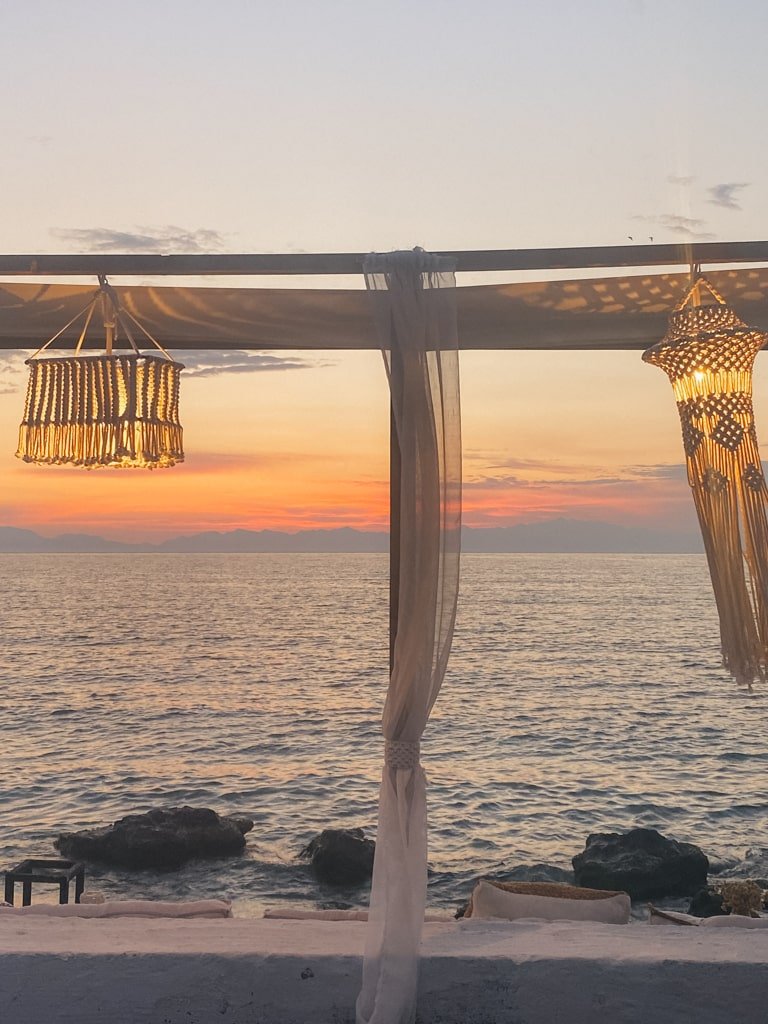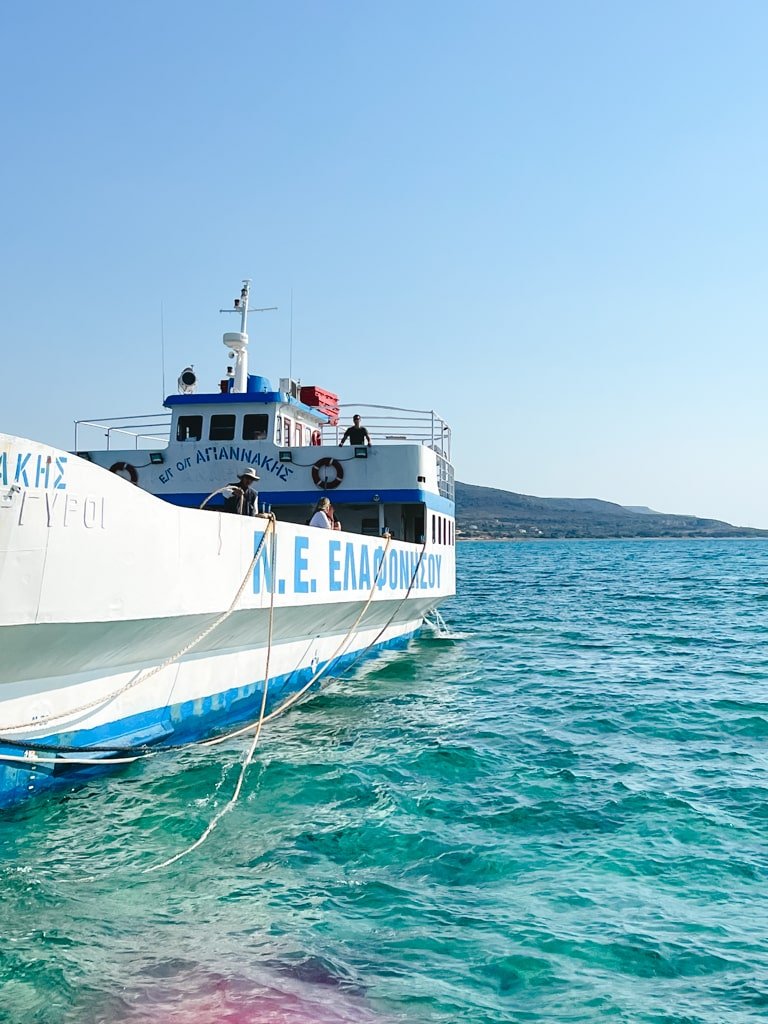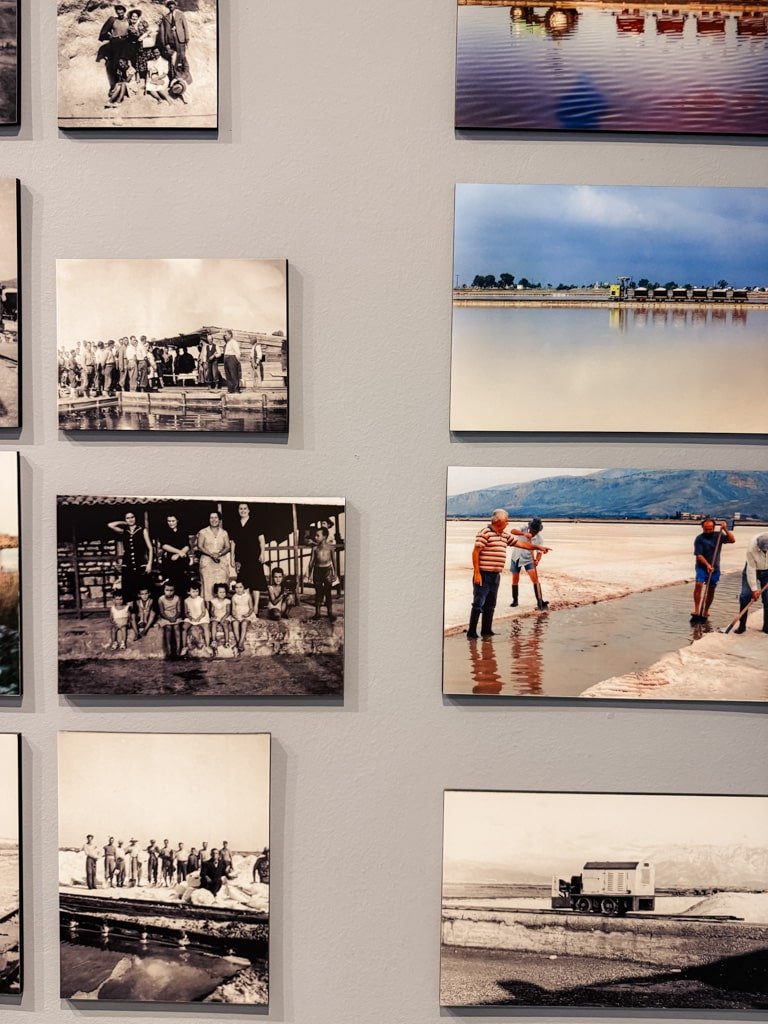This article may contain affiliate links. When you purchase something we recommend, we make a small commission. You don’t pay anything extra. 💘 For more details, check out our Terms of Use page.
I’ve had the pleasure of living in different corners of Greece — from the stunning island of Crete to the lesser-known, windswept Lemnos, and the vibrant, coastal city of Thessaloniki that’s become a hub for digital nomads.
As a tour leader and someone who spent 5 years living and working on the road, I’ve had the chance to explore Greece beyond the usual guidebook stops — often with a rental car and a loose plan.
So whether you’ve got 5 days or 2+ weeks to explore, here are 7 road trip itineraries that showcase just how diverse, beautiful, and unexpectedly wild Greece can be.
Table of Contents
ToggleGreece Road Trip Ideas
1. The Peloponnese Loop (5–7 Days)
Best for: Road trippers who love a mix of coastlines, castles, and ancient sites
Fly into/out of: Athens
Route:
- Athens (1 night) – Start your trip with a quick dose of city energy
- Nafplio (2 nights) – Charming old town, seaside walks, Palamidi Fortress
- Day trips to Mycenae + Epidaurus – Famous ruins and the ancient theatre
- Monemvasia (1 night) – Stay inside the stone castle town
- Elafonisos (1 night or day trip) – Caribbean-blue waters and total chill
- Kalamata (1 night) – Stop for a swim at Foneas Beach + visit Ancient Messini
- Athens (1–2 nights) – Return for museums, rooftop views, and a final night out


2. Central Greece Classic (7–10 Days)
Best for: History lovers and mountain escape seekers
Fly into: Athens
Fly out of: Thessaloniki
Route:
- Athens (2 days) – Get a quick taste of the Acropolis, Plaka, and ancient ruins — or skip if you’ve already been
- Delphi (1–2 days) – Explore the Temple of Apollo and museum, then head to nearby Arachova for lunch or an overnight
- Meteora (2 days) – Hike or drive to monasteries perched on rock towers, stay for the sunset views
- Vergina (stop) – Optional stop at the Royal Tombs of Philip II on your way north
- Thessaloniki (2 days) – Byzantine landmarks, lively food scene, and a youthful local vibe
Notes
It’s easiest to rent and drop off your car in the major cities — Athens or Thessaloniki — so plan your rental accordingly.


3. Thessaloniki to Athens Deep Dive (15–20 Days)
Best for: Slow travelers, cultural explorers, and people who’ve seen the basics and want more
Fly into: Thessaloniki
Fly out of: Athens (read this if you want to know how to overnight sleep at Athens airport)
Route:
- Thessaloniki (2–3 days): Explore Ano Poli, the White Tower, old markets, and seaside tavernas. Optional day trip to Vergina or Pella for ancient Macedonian ruins.
- Meteora (2 days): Stay in Kastraki or Kalabaka. Visit the monasteries, take a sunset tour, and enjoy short hikes among the rock formations.
- Plastira Lake (1 day): Head south for a peaceful mountain retreat. Stay at Montanema Handmade Village, known for its eco-friendly design, forest setting, and activities like herbal walks, cooking classes, and canyoning (if you’re up for it).
- Mesolongi (1 day): Swap Nafpaktos for this lesser-known lagoon town — visit the Salt Museum, stroll the lagoon paths, and soak in the area’s historical significance from the Greek War of Independence.
- Kalavryta (1 day): Take the Odontotos rack railway through the Vouraikos Gorge, visit the Cave of Lakes, and learn about WWII history at the local museum.
- Monemvasia (1–2 days): Sleep inside the walled town, enjoy car-free medieval streets, and dramatic sea views. Pure romance, especially at night.
- Elafonisos (1 day): Ferry from Pounta to the island. Simos Beach is paradise — turquoise waters and soft sand dunes. You can day trip or overnight.
- Kalamata (1 day): Relax at the beach, stroll the promenade, or visit the Ancient Messene ruins — one of the best preserved and least crowded ancient cities in Greece.
- Nafplio (1–2 days): Charming neoclassical town by the sea. Climb Palamidi Fortress, stroll the old town, and take day trips to Mycenae and Epidaurus.
- Athens (2 days): Wrap up your trip in the capital. Hit the Acropolis, explore hidden neighborhoods like Psirri and Koukaki, and grab a final dinner with a view.
Notes:
- Car rental: Best to pick up in Thessaloniki and drop off in Athens.
- Time of year matters: This route is ideal in spring and autumn. Summer inland heat can be intense.
- Accommodation ideas: Mix boutique hotels, eco-lodges (like Montanema), and unique stays inside fortress towns.


4. Northern Greece Hidden Gems Loop (12–14 Days)
Best for: Off-the-beaten-path travelers, nature lovers, and cultural deep-divers
Fly into/out of: Thessaloniki
Route Overview:
- Thessaloniki (1–2 days): Start in Greece’s most livable city. Stroll the waterfront, explore Byzantine sites, and prep for the northern frontier.
- Pomak Villages + Xanthi (2 days): Drive to Thrace. Base yourself near Xanthi, and visit the remote Pomak villages near Echinos or Thermes. Expect mountainous roads, wooden mosques, Ottoman bridges, and a unique blend of Greek-Muslim culture that few tourists ever see.
- Alexandroupoli (1 day): Stay seaside and enjoy fresh seafood. You can also visit the Evros Delta, home to over 300 bird species and wild landscapes.
- Lake Kerkini (1 day): Come back west for a night near Kerkini. Enjoy buffalo steaks, local wines, and even boat tours or birdwatching safaris depending on the season.
- Kastoria or Edessa stopover (optional): Add a scenic stop if you want to break up the drive west. Kastoria is a lakeside town with fur trade history and Byzantine churches. Edessa offers waterfalls and fresh mountain air.
- Ioannina (2 days): A lakeside gem with Ottoman flair. Visit Ali Pasha’s island, explore the castle district, and enjoy late-night lakeside cafés.
- Zagorohoria (2 days): Short drive north to one of Greece’s best-kept secrets. Do stone bridge hikes, river dips, and Vikos Gorge views. Villages like Papigo, Monodendri, or Kapesovo make a perfect base. Or visit the Tzoumerka villages instead.
- Metsovo (1 day): Wind down with wine, cheese, and bear sightings (seriously). Metsovo is a traditional Vlach village tucked in the Pindos mountains with alpine vibes.
- Return to Thessaloniki (1 day)
- Optional stop at Vergina or Mount Olympus depending on time. Or simply drive back and enjoy one last sunset from the city.
Notes:
- Road quality: Good overall, though winding in the mountains — drive slow in Zagori or Pomak regions.
- Rental tip: Make sure your rental allows travel in Northern Greece — some providers restrict certain rural roads.
- Best time to go: Spring to early autumn. Winter makes parts of Epirus difficult to access.


5. Athens to Crete: Highlights and Islands (10–12 Days)
Best for: Travelers who want a mix of ancient history, seaside charm, and rugged island adventures
Fly into: Athens
Fly out of: Heraklion or Chania (Crete)
Route Overview:
- Athens (2–3 days): Start your trip with a good mix of ancient and modern. Hit the Acropolis, grab coffee in Psyrri, and settle into the city vibe. If you’ve already seen Athens or want to add more islands then you can instead do day trips.
- Optional Day Trips from Athens:
- Aegina – Pistachio heaven and Temple of Aphaia
- Salamina – More low-key, local seafood spots, and fewer tourists
- Optional Day Trips from Athens:
- Delphi (1 night): Drive through the mountains to explore one of Greece’s most important ancient sites. The scenery here is stunning, and you can visit the nearby village of Arachova for mountain vibes.
- Nafplio (2 nights): Elegant old town streets, sea views, and day trip options to Mycenae or Epidaurus. Great food and relaxed atmosphere. One of the most charming towns on the mainland.
- Overnight Ferry or Flight to Crete
- From Piraeus: Book an overnight ferry to Heraklion
- Or catch a 1-hour flight from Athens instead
- Overnight Ferry or Flight to Crete
- Crete (4–5 days): Split your time between the Heraklion side (Knossos, Matala, Psiloritis mountains) or head to the Chania side (Balos, Elafonisi, Samaria Gorge). You’ll need a car here, and you’ll want the flexibility.
Rental Car Tips
You’ll need two separate car rentals:
- One for the mainland (Athens–Delphi–Nafplio loop)
- A second one for Crete
- Taking a rental on a ferry is not usually allowed, and even when it is, it’s more expensive and not worth it. Dropping off your car in Athens before the ferry or flight is the easier and cheaper move.
Notes:
- Best time to go: Late spring or early autumn — fewer crowds, better prices. But also great for summer trips as it includes a lot of islands.
- This is a balanced trip for people who don’t want to island hop constantly but still want variety
- You’ll get a solid dose of history, nature, and island life without too much rushing


6. 10 Days in Crete: The Ultimate Island Road Trip
Best for: Travelers who want to explore all sides of Crete — beaches, mountains, small villages, and historic towns
Fly or ferry into: Heraklion
Fly out of: Chania (or loop back to Heraklion)
This itinerary is a suggestion — you can slow it down or speed it up
Route Overview:
- Day 1–2: Heraklion & Surroundings
- Visit the Palace of Knossos
- Stroll the old city center and eat at local meze spots
- Optional day trip: Archanes or wine tasting nearby
- Day 3–4: Eastern Crete – Agios Nikolaos & Ierapetra Region
- Drive to Agios Nikolaos for a coastal stay
- Continue east to Vai Beach (yes, the one with palm trees)
- If you’re into hiking or gorges, check out Sarakina Gorge or Ha Gorge near Ierapetra
- Day 5–6: South Coast & Rethymno Region
- Cut across the island to the south — stop at Preveli Beach (palm forest + river).
- Stay in or near Rethymno, and make a detour to Anogia, a traditional mountain village known for music and culture
- Day 7–8: Chania & Western Crete
- Explore Chania Old Town, Venetian Harbor, and nearby beaches
- Day trips to Balos Lagoon or Elafonisi — both worth it but plan for early starts
- Day 9–10: Loutro & the Remote South Coast
- Take the ferry or hike in to Loutro, one of the most peaceful spots on the island — no cars, just sea
- Swim, relax, or use it as a base to explore Sfakia, Aradena Gorge, or nearby beaches
Car Rental Tips:
- You’ll need a car the entire time unless you’re planning to base yourself in just 1 or 2 places
- For Loutro, you’ll park in Chora Sfakion and take the ferry — don’t skip it, it’s a highlight
Good to Know:
- Crete is way bigger than most people expect — don’t try to rush it
- Each region feels different: the east is more low-key, the west has postcard beaches, the south coast is raw and remote
- Best times: May–early July or September–October (you’ll avoid the full heat and crowds)


7. Ionian Islands & West Coast Drive (10–14 Days)
Best for: Coastal drives, Ionian island hopping, and a relaxed return through mainland Greece
Fly into: Thessaloniki
Fly out: Athens
Route Overview:
- Thessaloniki (1–2 days)
- Explore Ano Poli, food tours, White Tower
- Pick up your rental car
- Drive to Igoumenitsa (1 day)
- Optional mountain detour via Metsovo
- Ferry to Corfu (Kerkyra)
- Corfu (2–3 days)
- Old Town charm, Paleokastritsa beaches, Achilleion Palace
- Return ferry to Igoumenitsa
- Lefkada (2–3 days)
- Drive down to this bridge-connected island
- Egremni Beach, Kathisma, and nearby Meganisi by boat
- Preveza & Coastal Epirus (1–2 days)
- Visit Nicopolis ruins, Alonaki and Monolithi beaches
- Astakos & Messolongi (1 day)
- Discover the quiet charm of Astakos, a favorite among slow travelers
- Continue to Mesolongi’s lagoons and unique salt flats
- Delphi (1 day)
- Temple of Apollo and panoramic views
- Athens (1–2 days)
- Acropolis, modern cafés, final stroll before your flight
Rental Car Notes:
If you want to skip the hassle of ferrying a rental car to Corfu (which may require extra insurance or come with high ticket costs), consider starting your trip by driving straight into Lefkada. You’ll see more of the coastal Epirus region and can focus on hidden gems like Preveza and Astakos without the logistical overhead of island car transport.


Driving in Greece
As someone who first learned to drive in New Zealand, I can confidently say that driving in Greece is a very different experience. Cities like Athens and Thessaloniki have narrow streets, erratic parking habits, and road markings that feel more like suggestions than rules. Add in scooters weaving between lanes and double-parked cars, and it becomes clear why many visitors choose to skip driving in urban areas altogether.
That said, Greece’s main highways — such as the A1 (Athens to Thessaloniki) and Egnatia Odos (Igoumenitsa to Alexandroupoli, passing through Thessaloniki) — are excellent. They’re well-maintained, fast, and easy to navigate. You’ll hit some tolls, but the drive is smooth and the signage is clear.
Things get trickier in villages, on islands, and in mountainous areas. Roads there are often narrow, winding, and filled with local traffic quirks — from aggressive drivers to the occasional herd of goats. But if you’re patient and adaptable, it’s all part of the charm.
Parking is another thing to prepare for. In major cities, it’s often limited and rarely free. You can either pay for covered parking (worth it for peace of mind) or do as the locals do — circle the block, invent a spot, and pray it doesn’t get towed. Not ideal, but manageable. A good GPS or offline Google Maps is a must — though don’t take every direction literally. I’ve ended up in animal pens on the islands or halfway down a one-way alley more than once. At best, it’s an adventure. At worst, you’ll have to reverse uphill and ask a local for help.
For rental cars, an International Driver’s Permit (IDP) is often required alongside your license — especially if you’re coming from outside the EU. Always double-check with your rental agency.
For the last few years, I’ve used Discover Cars as my go-to rental comparison site. They let you compare multiple agencies in one place, and I always recommend adding full insurance coverage — learned that the hard way on our last trip to Malta.
I use and compare prices for car rentals, with Discovercars.com. It is a giant rental and comparison site on the market and it has a lot of perks that make sense if you travel often.
Once you head to Discover Cars, you’ll find an easy search engine to filter by location, dates and pick up location.
Tip: Always check a few different pick up locations when booking a rental car.

Travel Costs in Greece (2025)
Prices in Greece have been rising steadily since the economic crisis years. Unfortunately, for many locals, the kind of holidays we promote as travel bloggers are completely out of reach now — a sad but honest truth. Still, it remains a very worthwhile destination for international travelers, especially if you know where to cut costs without sacrificing experience.
Accommodation is the first place to save. Budget guesthouses and hostels are still widely available, and camping used to be a great alternative — until recent legislation in 2025 severely limited freedom camping and made it harder for campervans to find legal overnight stops. Personally, I think the country should have focused on creating infrastructure first before penalizing an already small tourism sector.
Food costs have also crept up, but there are still great ways to eat affordably. Street food like gyros and souvlaki are often under €4, and bakeries or supermarkets offer plenty of budget meal options. My go-to tip: splurge on one sit-down meal per day (usually lunch when prices are lower), and keep the rest simple.
Fuel, though, is a real shocker. As of 2025, Greece consistently ranks among the most expensive fuel prices in Europe, often hovering around €2.10–€2.30 per litre. Plan accordingly — and always refill before entering more remote areas or islands.
If you’re budget-conscious, plan for around €100/day per person (this includes shared car costs, basic accommodation, and light meals). If you want a more comfortable mid-range trip with better stays and activities, €130–€150/day per person is more realistic.


Tolls in Greece
The toll situation in Greece is another one of those unfortunate realities I could write a whole essay about. Most of the country’s toll roads have been privatized, and the system reflects some of the deeper issues of government mismanagement and corruption. But let’s stick to the practical side for now.
If you’re planning to drive between major cities or across long distances, tolls will add up fast — and there’s no consistent digital pass system like you’ll find elsewhere in Europe. You’ll often need to stop and pay at multiple booths, sometimes just a few kilometers apart.
For example, driving from Athens to Thessaloniki currently costs about:
- €34.50 in tolls (about $37 USD)
- €80–90 in fuel, depending on your car type and exact route
That’s €115–125 total one-way, making it one of the more expensive routes in Europe when you break it down by distance. And just a year and a half ago, tolls were closer to €30, so you can see the upward trend.
There are alternative toll-free routes, but they’re slower, less maintained, and can add several hours to your drive — often not worth the trade-off unless you’re on a very tight budget or want to explore the scenic backroads.


Is it Safe to Travel in Greece in 2025?
Yes — Greece is generally very safe for travelers, including solo women and digital nomads. Like anywhere, petty theft can happen (especially in big cities like Athens), but violent crime is extremely rare. In smaller villages and islands, the vibe is even more relaxed, and it’s not uncommon to see people leaving keys in scooters or unlocked doors.
The main risks you’ll face are driving-related (reckless local drivers, narrow roads), or heat-related, especially during July and August when heatwaves are common.
Another thing worth mentioning is widfires. Greece is plagued by wildfires every year, so make sure you check your phone, especially if you’re visiting mountainous or forested regions during July and August.
Protests occasionally happen in Athens, especially around Syntagma Square, but are easy to avoid and rarely escalate beyond traffic disruptions.
When Is the Best Time to Visit?
This really depends on your priorities, but if you are not set on islands and summer holidays, then March-May and October-November are amazing for road trips.
A late fall trip around the mountainous northern regions, will introduce you to the beautiful fall colors around Rodopi mountains, and is the best time to visit Metsovo and Zagorohoria as well, unless you want to see snow, in which case you need to aim for January or February.
For Crete and the island destinations, you can also visit in early June or early to mid September. As a general note, mid September will have warmer water for swimming and early June has more chances of summer rains during the afternoon.


Other Activities Worth Considering
If you want to include some special activities, or go beyond the general sightseeing and dining out routine, here are a few things you can plan for.
- Visit a thermal spa (Pozar in the north or Loutraki near Athens/Peloponnese)
- Try a wine tasting tour near Lake Kerkini or the destinations in the north)
- Stay in a traditional mountain guesthouse in Zagorohoria or Evritania
- Hike a gorge (Samaria, Vikos, Lousios)
- Join a cooking class or olive oil tasting in Athens
- Visit lesser-known museums like the Salt Museum in Mesolongi or the Silversmithing Museum in Ioannina


Why a Road Trip is a Great Idea
A road trip is a great idea if you want to create space for organic moments of connection, especially in mountain towns or smaller villages, where locals still offer you a spoon sweet, or the beaches are not packed with umbrellas and tourists.
Of course, these are getting harder and harder to find but they are still there.
The bus system (KTEL) while decent, doesn’t connect the dots nearly as well as your own wheels will so doing it with your own car (or a rental) allows you to see a lot more.
Frequently Asked Questions About Road Tripping in Greece
- Do I need an international driver’s license to rent a car in Greece?
Yes — if you’re coming from outside the EU (e.g., US, UK, Australia), you’ll need an International Driving Permit (IDP) along with your valid license. Some rental agencies may not ask, but others will absolutely refuse without it — don’t risk it.
- Is it hard to drive in Greece?
It depends on where you’re going. Highways are well-marked and modern. But in villages, islands, and mountain towns, expect narrow roads, limited signage, and aggressive local driving. Just go slow, stay alert, and use Google Maps with a grain of salt — it’s taken us into goat pens more than once.
- Can I take a rental car on the ferry?
Usually no, unless the rental company gives explicit written permission. Even then, it often voids the insurance. It’s usually cheaper and easier to rent a second car on the next island. For trips like Crete or Corfu, return the mainland car before boarding.
- What’s the average cost of tolls and fuel?
Fuel is among the most expensive in Europe, hovering around €2 per liter (that’s $8 per gallon). Tolls are high too — Athens to Thessaloniki is €34.50 in tolls alone, plus around €80+ in fuel depending on your vehicle.
- What kind of car should I rent?
Unless you’re traveling with a large group or need extra storage, compact or economy cars are best. They’re easier to park, fit down narrow roads, and are more fuel-efficient. Hybrid cars are getting cheaper due to government grants but don’t expect to find a lot of spots to charge them.
- What side of the road do they drive on?
Right-hand side, like most of Europe.
- Can I rely on Google Maps in Greece?
Mostly — but it’s not perfect. Always download offline maps for your route. In more remote areas, signage may be minimal, and some suggested shortcuts will be… creative. Trust your instincts and ask a local if you’re unsure.
- Is it easy to find gas stations?
Yes — especially near towns or highways. In remote mountain regions, fill up in advance. Some gas stations may be closed Sundays or only accept cash. Pay attention to opening hours and don’t wait until your tank is low.
- How do I avoid tourist traps when eating out?
Avoid places with laminated menus in 5 languages and aggressive waiters. Instead, walk a block away from the main square, check where locals are eating, and look for handwritten menus or daily specials. Tip: If the house wine comes in a jug, you’re probably in the right place.
Practical Tips for Traveling Around Greece
1. Most things are still closed on Sundays
Due to religion and tradition, Sundays in Greece were always meant to be a family day — and in many places, that’s still how it works. While you’ll usually find restaurants, cafes, and beach bars open (especially in summer), expect most shops, malls, and services to be closed. If you’re heading to smaller or less touristy areas, plan ahead. That said, in peak summer, you’ll often find mini markets and some tourist shops open even on Sundays.
2. Pharmacies are everywhere — but don’t expect supermarket meds
In Greece, you can’t grab painkillers or allergy meds from the supermarket like you might back home. But don’t worry — pharmacies are super common and the staff are usually great. Greece actually has one of the highest numbers of pharmacies per capita in Europe, which means you’ll find one easily, even in smaller towns. If you need essentials, do a quick pharmacy run when you land — the ones at Athens Airport are open and the staff speak English. Just keep in mind they usually close in the afternoons and on weekends, unless they’re on the emergency rotation. You can find open ones by Googling “εφημερεύοντα φαρμακεία + [city]”.
3. Try calling or emailing places directly for better rates
Especially if you’re traveling outside the busy summer months, it can be worth reaching out to hotels or apartments directly instead of booking through Airbnb or Booking. Sometimes they’ll offer better prices or throw in extras like free breakfast or early check-in. Just don’t expect this to always work — and be ready for a bit of Greeklish or slower replies.
4. Keep some cash on you
Most places in Greece do accept cards now, especially in the cities and bigger islands. But rural areas, small tavernas, local buses, and some rooms for rent may still prefer cash — or only take it. It’s smart to have at least €50–100 in cash with you at all times, just in case.
5. Tap water is (mostly) safe — but double-check on islands
Mainland Greece usually has perfectly drinkable tap water, and locals will often tell you so proudly. But on many smaller islands, the tap water is either desalinated or brought in, and it’s not always great for drinking. When in doubt, ask your host or hotel. I usually carry a reusable bottle and just fill up when I know it’s good.
ESSENTIAL INFORMATION
Must Know When Visiting Greece
- Emergency: Dial 112 for all emergencies. For police, dial 100. For ambulance 166. For fire dial 199.
- Language: English is widely spoken in most tourist areas. Common phrases to learn are “Kalimera” (Good morning), “Yia” (Hello and Bye – informal), and “Efharisto” (Thank you).
- Water: Tap water is safe in Athens, mainland Greece and a small number of islands. Always ask beforehand.
- Driving: Right-hand side, international driving permit recommended. Book your rental car with Discover Cars for the best rates and comparisons across all major and local companies.
- Accommodation: Booking.com for the most options on hotels, apartments and hostels. Free cancellation in a lot of places and no need to pre-pay. Great for their rewards points system.
- Islands: There are a lot of islands, spread out around the country. Start with a map or ferry service to get an idea of travel times. Ferry Scanner is the best for ferry bookings to the Greek islands.
- Activities: From cultural sights to day trips, food tours and city guides, use Get Your Guide.
- Public Transport: For Athens, use the Athens Metro. If you are not renting a car, use Trains (Hellenic Train) or KTEL (Public Buses) services.
- Domestic Airlines: The main airlines for air travel are Aegean Airlines and Sky Express. I recommend Aegean Airlines and its rewards program.
- Taxi: Always use a taxi app, instead of flagging down a taxi from the road. Use FREE Now (formerly BEAT).
- Culture: A siesta nap is still common in less touristy areas. This also means businesses will close between 2 PM – 5 PM. Except for hospitality businesses, everything is closed on Sundays.




